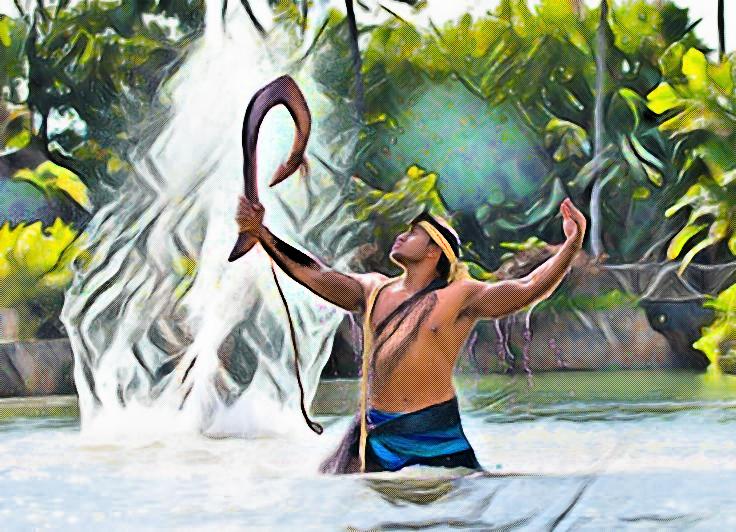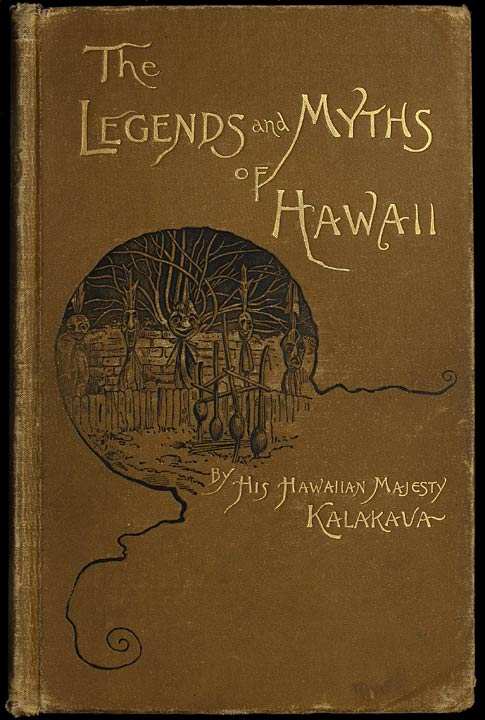Immerse yourself in the enchanting world of Hawaiian legends and myths before your next visit to the Aloha State. With rich storytelling and captivating folklore, these ancient tales offer a deeper understanding of Hawaiian culture and its connection to the land. From the legendary demi-god Maui and his daring feats to the mythical creatures that inhabit the islands, these stories come alive with every word. So grab a lei, sit back, and let the magic of Hawaiian legends transport you to a place where history, myth, and beauty blend seamlessly together.
1. Pele, the Goddess of Fire
1.1 The Legend of Pele
Pele, the Goddess of Fire, is a central figure in Hawaiian mythology and folklore. According to legend, Pele is believed to be the creator of the Hawaiian Islands, responsible for the volcanic eruptions that formed the land. Born as one of the many children of Wakea, the sky father, and Papa, the earth mother, Pele is said to have been banished from her ancestral homeland of Tahiti and embarked on a treacherous journey across the Pacific Ocean. Legend has it that wherever Pele’s journey led her, volcanic eruptions occurred, leaving behind a trail of fiery devastation.
1.2 Pele’s Importance in Hawaiian Culture
Pele’s significance extends beyond her role as the creator of the Hawaiian Islands. She is also regarded as the goddess of fire and volcanoes, governing the natural forces that shape the land. In Hawaiian culture, Pele is revered as a powerful deity with a complex and sometimes capricious nature. She is both feared and respected, as her volcanic eruptions can bring destruction while also creating new land and fertile soil. Pele is often invoked for protection, guidance, and blessings, particularly by those living near volcanic regions such as the island of Hawai’i.
1.3 Famous Locations Associated with Pele
Throughout the Hawaiian Islands, there are several famous locations intimately connected to the legend of Pele. One of the most iconic is Kilauea, the highly active volcano located in Hawai’i Volcanoes National Park. Kilauea is considered Pele’s main residence and is said to be the place where she continues to dwell. Another significant site associated with Pele is Halema’uma’u Crater, located within the caldera of Kilauea. It is believed to be the home of Pele’s sister, the goddess Kapo, who assists Pele during her fiery manifestations.
1.4 Modern Interpretations of Pele
In modern times, the legend of Pele continues to capture the imagination of both locals and visitors to Hawaii. Many poets, artists, and musicians have drawn inspiration from Pele’s fiery spirit and incorporated her into their work. Additionally, various cultural events and festivals celebrate Pele and her role in Hawaiian mythology. For example, the Merrie Monarch Festival, held annually in Hilo, pays homage to Pele through traditional hula performances. Pele’s legend continues to be a vital part of Hawaiian identity and serves as a reminder of the power and beauty of the natural world.
2. The Menehune, Hawaii’s Mysterious Little People
2.1 Who are the Menehune?
The Menehune are mythical creatures deeply rooted in Hawaiian folklore. They are believed to be a race of small people, often described as dwarfs or little people, with supernatural powers. Legends speak of the Menehune as master craftsmen and builders, capable of constructing elaborate structures overnight. They are said to possess incredible strength and cunning, often outwitting humans who dare to cross their paths.
2.2 Menehune Legends and Stories
Numerous legends and stories surround the Menehune, depicting their mischievous behavior and their interactions with humans. One popular tale speaks of the Menehune building the ancient Hawaiian fishponds, which are characterized by their remarkable construction and precision. According to the legend, the Menehune worked during the night, completing the massive task before sunrise. Another story tells of a fisherman who encountered the Menehune while exploring a remote valley. The Menehune played tricks on the fisherman, moving his belongings and leaving him bewildered.
2.3 Historical Menehune Encounters
Though the Menehune are considered mythical beings, there have been accounts throughout history of alleged encounters with these mysterious creatures. Many locals and visitors claim to have seen small figures darting through the forests or witnessed their handiwork in the form of structures or carvings seemingly crafted by supernatural hands. These encounters and sightings have contributed to the enduring fascination and belief in the existence of the Menehune.
2.4 Menehune in Modern Times
In contemporary Hawaiian culture, the legend of the Menehune continues to captivate the imagination. They are often seen as benevolent protectors of the land and are associated with good luck and prosperity. The Menehune are frequently depicted in art, crafts, and even in the names of businesses and establishments throughout the islands. Their legacy lives on as a reminder of the rich folklore and captivating mythology that shapes Hawaiian culture.

3. The Legend of Maui, the Demigod
3.1 The Birth and Early Adventures of Maui
Maui, a legendary demigod in Hawaiian mythology, is known for his many heroic exploits and remarkable deeds. According to the legend, Maui was born to the goddess Hina and the mortal chief Makeatutara. From a young age, Maui displayed extraordinary abilities and was eager to use his powers to benefit humankind. One of Maui’s early adventures involved capturing the sun and forcing it to slow its journey across the sky, lengthening the daylight hours.
3.2 Maui and the Sun: A Legendary Feat
One of the most famous tales involving Maui centers around his quest to slow down the sun’s speed. According to the legend, the sun traveled across the sky too quickly, leaving little time for people to complete their daily tasks. Determined to help his people, Maui set out on a daring mission. He traveled to the farthest eastern point of the Hawaiian Islands, where the sun rises, and lassoed the sun with a rope made from his sister’s hair. Maui forced the sun to agree to his terms, allowing the people more time during the day.
3.3 Maui’s Encounter with the Goddess of Death
Maui’s fearless and mischievous nature led him to confront the powerful goddess of death, Hine-nui-te-po. Maui sought to overcome death and grant immortality to humanity. In a daring attempt, Maui transformed himself into a tiny bird and successfully entered Hine-nui-te-po’s dwelling place. Yet, his efforts were in vain, as he was captured and crushed by the goddess, meeting his own mortality. Despite his ultimate failure, Maui’s bravery and audacity remain highly revered in Hawaiian culture.
3.4 Maui’s Legacy in Hawaiian Culture
Maui’s legacy extends beyond his mythical adventures. He is seen as a cultural hero and a symbol of perseverance and tenacity. Maui’s stories and exploits serve as valuable life lessons, teaching the importance of courage, determination, and resourcefulness. In modern Hawaii, Maui’s influence can be seen in various aspects of society, including the performing arts, literature, and even tourism. The demigod Maui continues to inspire and captivate both locals and visitors alike through his legendary tales.
4. The Legend of the Night Marchers
4.1 Who are the Night Marchers?
The Night Marchers, known as “Huaka’i Pō” in Hawaiian, are spirits of ancient Hawaiian warriors who roam the islands during specific lunar phases, particularly on nights with a full moon. These restless spirits are believed to be on their way to battle or conducting sacred rituals. The Night Marchers are said to be accompanied by haunting chants, drumming, and the faint sound of weapons clashing, creating an eerie and formidable presence.
4.2 Encountering the Night Marchers
To encounter the Night Marchers is believed to be a dangerous and terrifying experience. Legend has it that anyone who sees the Night Marchers and looks directly at them is cursed to be marked for death. Eye contact, according to Hawaiian folklore, is considered a sign of disrespect in their presence and is strongly discouraged. Witnesses are advised to lie face down on the ground and avoid making any noise until the procession fades away.
4.3 Protective Measures Against Night Marchers
As a precaution against encountering the Night Marchers, there are several protective measures one can take. These include avoiding traveling at night during specific lunar phases when the Night Marchers are believed to be active. Additionally, it is customary to show respect to the spirits by staying quiet and avoiding any disruptive behavior while near ancient Hawaiian sites or sacred areas. Observing these customs is believed to deter any potential encounters with the vengeful Night Marchers.
4.4 Modern Accounts of Night Marcher Encounters
Although encounters with the Night Marchers are rare, there have been reported sightings and eerie encounters in modern times. Some individuals claim to have witnessed ghostly processions, complete with the sound of chanting and drums. These stories and accounts contribute to the enduring belief in the Night Marchers and maintain their place in Hawaiian folklore and superstition.
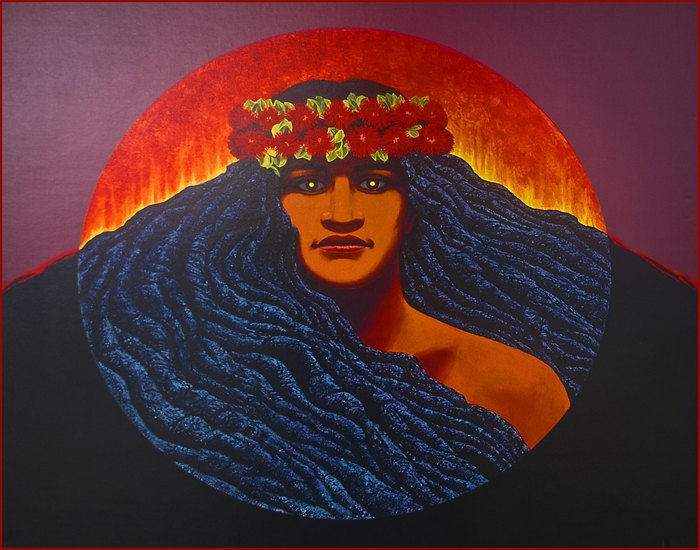
5. The Shark-Man, Nanaue
5.1 Nanaue’s Beginnings and Transformation
Nanaue, commonly known as the Shark-Man, is a prominent figure in Hawaiian mythology. According to the legend, Nanaue was born to a human mother and a shark god father. Raised among humans on the island of Moloka’i, Nanaue possessed both human and shark-like characteristics. As he grew older, his true identity became evident, revealing his ability to transform into a shark at will.
5.2 Nanaue’s Mythological Significance
Nanaue’s legend serves as a cautionary tale against deceit and the consequences of one’s actions. In the myth, Nanaue’s dual nature reflects the struggle between his human morality and his instinctual shark nature. His story warns against indulging in dark desires and engaging in harmful behavior, as it ultimately leads to destruction and alienation from society.
5.3 Incidents Involving Nanaue
Throughout Nanaue’s tale, several incidents are commonly associated with him. One such event recounts Nanaue’s act of consuming human flesh, adopting a sinister behavior reminiscent of his shark ancestry. As rumors of these acts spread, Nanaue’s secret was revealed, leading to his eventual demise at the hands of the community who viewed him as a monster.
5.4 The Legacy of Nanaue
Although Nanaue’s story is one of cautionary morality, his legend continues to fascinate and intrigue. The Shark-Man serves as a reminder of the consequences of one’s actions and the importance of choosing the path of compassion and integrity. In modern Hawaiian culture, Nanaue’s image is often depicted in art and represents a moral lesson passed down from generation to generation.
6. The Legend of the Lava Monsters, Nā Ua ʻŌpua
6.1 The Story of Nā Ua ʻŌpua
Nā Ua ʻŌpua, also known as the lava monsters, are legendary creatures believed to dwell within the molten lava of active volcanoes in Hawaii. According to the mythology, these monstrous entities emerge from the lava during eruptions, manifesting themselves as fearsome beings. Nā Ua ʻŌpua are said to be born from the fiery rage of Pele, the Goddess of Fire, and fulfill her bidding, guarding and protecting her sacred realms.
6.2 The Terror of Nā Ua ʻŌpua
The presence of Nā Ua ʻŌpua strikes fear into the hearts of those who believe in their existence. These lava monsters are described as towering giants with glowing red eyes, sharp fangs, and clawed hands, capable of great destruction with their fiery touch. The mere sight of Nā Ua ʻŌpua is said to induce panic and terror, warning all who dare to venture near the fiery realms of Pele’s wrath.
6.3 Folklore and Warnings about Nā Ua ʻŌpua
Folklore surrounding Nā Ua ʻŌpua serves as a cautionary tale, discouraging individuals from venturing too close to active volcanoes or disrespecting Pele’s sacred sites. It is believed that those who do so risk encountering these malevolent lava monsters and suffering grave consequences. Locals and visitors alike are often advised to treat volcanic regions with reverence and to heed the warnings and boundaries put in place for their safety.
6.4 Contemporary Interpretations of Nā Ua ʻŌpua
In contemporary culture, Nā Ua ʻŌpua continue to capture the imagination, inspiring various artistic interpretations and depictions. They serve as a reminder of the power and danger associated with volcanic activity. Through modern storytelling, art, and media, the legend of Nā Ua ʻŌpua offers a window into Hawaii’s rich mythological traditions and their relevance to understanding the awe-inspiring forces of nature.
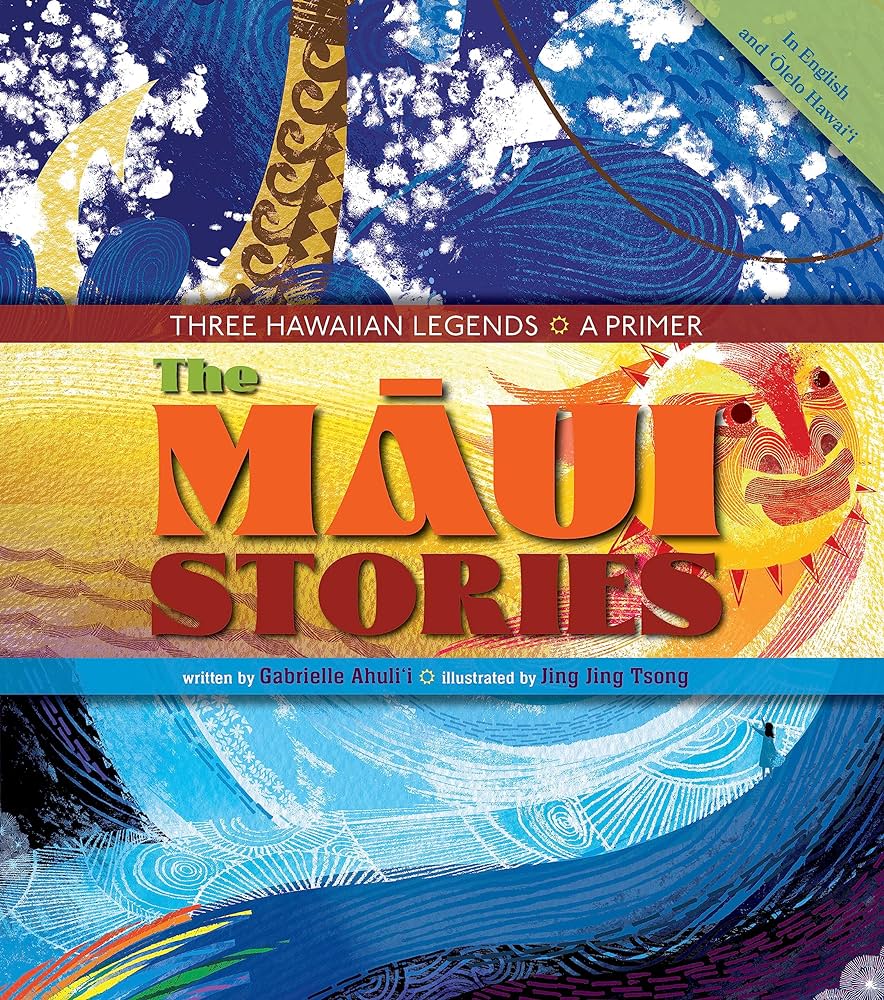
7. The Battle of Kuamoʻo: Clash of Hawaiian Gods
7.1 Historical Context of the Battle
The Battle of Kuamoʻo, also known as the Battle of Keʻei, was a significant conflict that took place in 1819 on the Big Island of Hawai’i. The battle emerged as a clash of opposing ideologies between Hawaiians who embraced Christianity and those who adhered to traditional Hawaiian religious practices. The conflict marked a pivotal moment in Hawaiian history and culture, with lasting impacts on the island’s spiritual and political landscape.
7.2 Key Figures and Gods Involved
At the heart of the Battle of Kuamoʻo were the Hawaiian chiefs Kekuaokalani and Liholiho, who represented the opposing factions. Kekuaokalani, a staunch supporter of traditional Hawaiian beliefs, sought to preserve the ancient traditions and religious practices of the islands. In contrast, Liholiho, also known as King Kamehameha II, had embraced Christianity and European influences, aiming to modernize the Hawaiian kingdom.
7.3 The Battle and Its Outcome
The Battle of Kuamoʻo was a fierce conflict fought on the slopes of Hualalai Volcano. Kekuaokalani and his forces fought valiantly, showcasing their warrior skills and resilience. However, despite their efforts, Liholiho’s forces, equipped with superior weaponry and support from the Christian missionaries, ultimately emerged victorious. The battle resulted in significant loss of life and marked a turning point in Hawaiian society, as it accelerated the decline of traditional religious practices.
7.4 The Battle’s Significance in Hawaiian History
The Battle of Kuamoʻo holds great significance in Hawaiian history as a pivotal moment in the transformation of the islands. It sparked a profound shift in religious and cultural practices, as traditional Hawaiian spirituality faced increasing challenges from Christianity. The conflict serves as a reminder of the profound impacts of colonization and outside influences on indigenous cultures and highlights the complexities of preserving and honoring cultural heritage.
8. The Ghostly Woman of Nuʻuanu Pali
8.1 The Legend of the Ghostly Woman
The Ghostly Woman of Nuʻuanu Pali is a well-known legend among the people of Hawaii. According to the tale, a woman dressed in white haunts the Nuʻuanu Pali Lookout, a scenic cliff on the island of O’ahu. Legend has it that she is the vengeful spirit of Queen Kaʻōleiokū, who met a tragic end during the Battle of Nuʻuanu in 1795. Her spirit is said to wander the cliffs, mourning her lost kingdom and seeking justice for her untimely demise.
8.2 Sightings and Encounters
Over the years, various individuals claim to have seen the Ghostly Woman of Nuʻuanu Pali, reporting eerie encounters and unexplained phenomena. Witnesses often describe a woman dressed in a flowing white gown, her face obscured by long, dark hair. The ghostly figure is said to appear suddenly, standing at the edge of the cliff or walking along the road, her presence evoking a sense of sorrow and loss.
8.3 Haunted Nuʻuanu Pali
Nuʻuanu Pali, with its sweeping views and powerful winds, has long been considered a place of spiritual significance. Many locals believe that the site holds a strong spiritual energy, attracting not only the Ghostly Woman but also other supernatural entities. Visitors to the lookout often report feelings of unease or a mysterious presence, heightening the area’s reputation as a haunted location.
8.4 Speculations and Explanations
While skepticism surrounds tales of the Ghostly Woman, the legend has endured throughout generations in Hawaii. Some attribute sightings to overactive imaginations or tricks of the light and wind. Others believe that the ghostly figure represents the enduring spirit and resilience of the Hawaiian people in the face of colonization and loss. Regardless of the explanation, the Ghostly Woman of Nuʻuanu Pali remains an integral part of Hawaii’s ghost lore and serves as a reminder of the island’s rich history and cultural heritage.
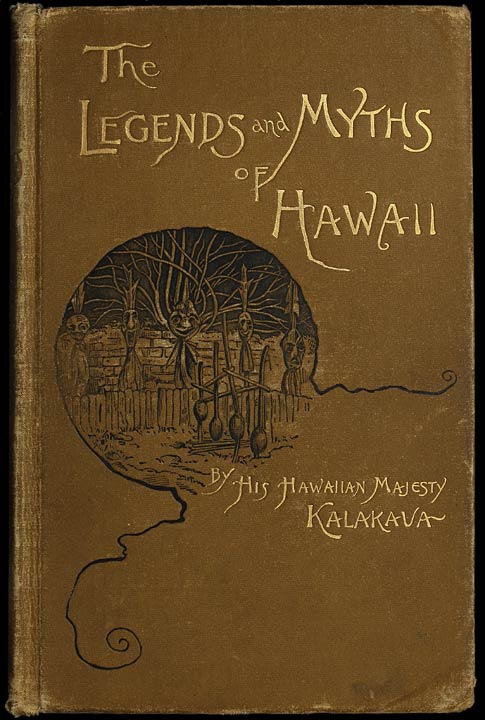
9. The Legend of Hiʻiaka, the Hawaiian Goddess of Hula
9.1 Hiʻiaka’s Origin and Lineage
Hiʻiaka, the Hawaiian goddess of hula, is a central figure in Hawaiian mythology and cultural traditions. She is the younger sister of the fire goddess Pele, and much of her legend revolves around her adventures and associations with Pele. Hiʻiaka is depicted as a powerful young woman with grace, beauty, and exceptional skill in hula, a traditional Hawaiian dance form.
9.2 Hiʻiaka’s Journey to Retrieve Pele’s Lover
One of the most prominent tales involving Hiʻiaka tells of her perilous journey to retrieve Pele’s lover, Lohiʻau, from a distant island. Hiʻiaka encounters numerous challenges and temptations along the way, testing her loyalty and skills. During her journey, Hiʻiaka displays her mastery of hula and uses her charms and intelligence to navigate through treacherous situations. Eventually, she succeeds in bringing Lohiʻau back to Pele, solidifying Hiʻiaka’s reputation as a beloved and resourceful figure.
9.3 Hiʻiaka and Her Influence on Hula
As the goddess of hula, Hiʻiaka holds great significance in Hawaiian dance and cultural practices. Her stories and exploits are often celebrated and reenacted through hula performances. Hiʻiaka’s legendary journey and her role in reuniting Pele with her lover serve as powerful themes within hula, reflecting courage, determination, and the enduring bond between siblings.
9.4 Hiʻiaka and Modern Hawaiian Culture
The influence of Hiʻiaka extends beyond traditional cultural practices. In modern Hawaiian culture, Hiʻiaka’s divinity is often embraced as a symbol of female empowerment and strength. Her story and connection to hula continue to inspire artists, storytellers, and cultural enthusiasts, ensuring her presence in the fabric of Hawaiian identity.
10. The Creation Story: Hawaiian Cosmogony
10.1 The Birth of the Hawaiian Islands
According to Hawaiian cosmogony, the creation of the Hawaiian Islands is attributed to the divine forces of the gods and goddesses. The creation story begins with the union of sky father Wakea and earth mother Papa, who brought forth the islands as their offspring. As each island was born, it was given its unique characteristics and attributes, shaping a diverse landscape that would become the Hawaiian archipelago.
10.2 Gods and Goddesses in the Creation Story
The creation story encompasses a pantheon of gods and goddesses who played pivotal roles in the shaping of the Hawaiian Islands. Among them, Kane, the god of creation, is often credited with the design and structure of the land. Kanaloa, the god of the ocean and underground waters, contributed to the formation of the seas surrounding the islands. These deities, along with numerous others, worked in harmony to bring forth the natural wonders of the Hawaiian Islands.
10.3 The Relationship between People and Gods
In Hawaiian cosmogony, the relationship between people and gods is deeply intertwined. The gods are believed to be the protectors and custodians of the land, sea, and sky. The people, in turn, are entrusted with the responsibility of caring for and respecting the natural world. This interdependence emphasizes the importance of maintaining a harmonious relationship with the gods and living in harmony with the environment.
10.4 The Continuing Relevance of the Creation Story
The creation story remains relevant in modern Hawaiian culture, serving as a collective narrative that connects the past with the present. It reinforces the idea of stewardship and respect for the land and serves as a reminder of the deep spiritual and cultural roots of the Hawaiian people. The creation story provides a lens through which Hawaiians and visitors alike can appreciate the unique beauty and sacredness of the islands.
